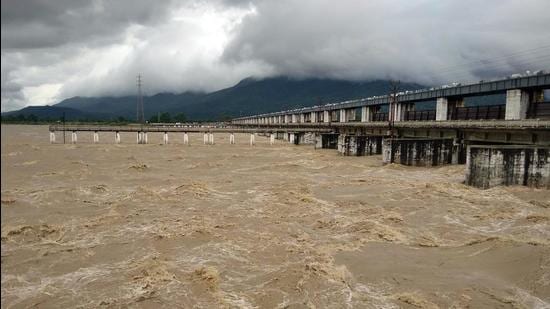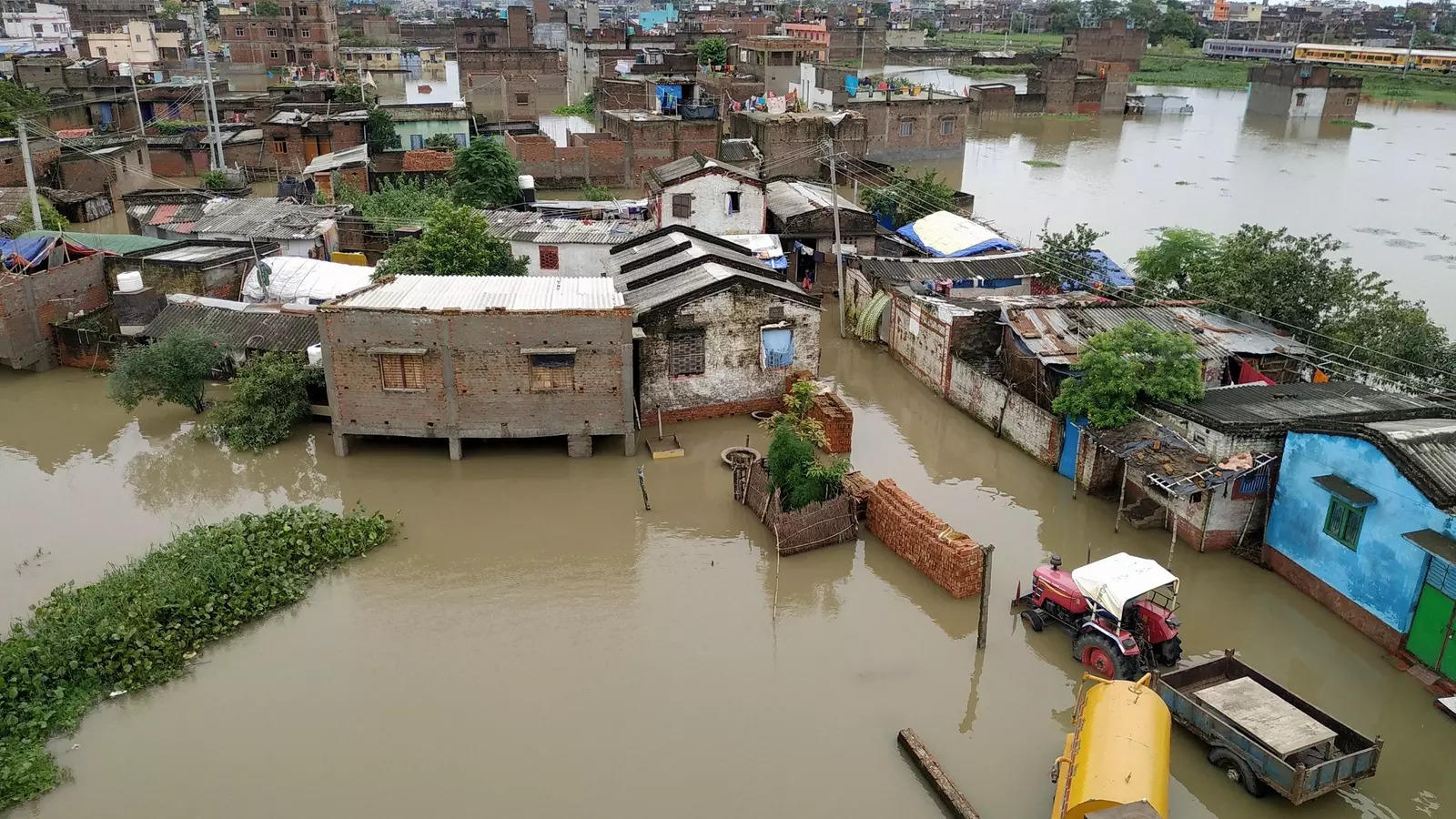Crisis Looms as Water Levels Surge: North Bihar on High Alert as Kosi and Gandak Rivers Swell

Crisis Looms as Water Levels Surge: North Bihar on High Alert as Kosi and Gandak Rivers Swell
A looming crisis has gripped the northern regions of Bihar as authorities issued a flood alert due to a rapid increase in water levels in the Kosi and Gandak Rivers. The Water Resources Department (WRD) officials have pointed to heavy discharges of water from the Birpur barrage and Valmikinagar barrage as the main drivers behind this alarming situation. The surge in water levels has been further exacerbated by heavy rains in the river catchment areas of Nepal, leaving the region vulnerable to the threat of devastating floods.
The inhabitants of the northern Bihar region are no strangers to the challenges posed by the annual monsoon floods, which can wreak havoc on homes, farms, and infrastructure. This year, however, the situation has taken a particularly precarious turn. The WRD’s announcement of a flood alert has sent ripples of concern through local communities, urging them to take swift precautions to safeguard lives and property.
The Kosi River, often referred to as the “Sorrow of Bihar” due to its history of unleashing catastrophic floods, has seen a rapid rise in water levels in the wake of heavy water discharges from the Birpur barrage. The barrage, a crucial water management structure, plays a significant role in controlling the flow of water downstream. However, the relentless surge of water from the barrage, combined with the excessive rainfall in the region’s upstream areas, has pushed the river’s water levels beyond their usual limits.

Not far behind, the Gandak River has also witnessed a significant increase in water levels. The Valmikinagar barrage, responsible for regulating the water flow in the Gandak, has seen a substantial discharge of water, resulting in the river’s swelling waters downstream. This surge has placed several low-lying areas at an elevated risk of inundation, further adding to the urgency of the flood alert.
WRD officials have been quick to attribute the escalating water levels to the heavy rainfall in the catchment areas of Nepal’s rivers. The geographical proximity of these areas to the northern parts of Bihar makes them particularly susceptible to the overflow of water. The interconnectedness of the rivers, combined with the unpredictable nature of monsoon rains, underscores the need for coordinated efforts between India and Nepal to manage water resources effectively and minimize the impact of such disasters.
Local authorities, along with disaster response teams, are mobilizing resources to address the imminent threat. Evacuation plans are being put into action to ensure the safety of residents residing in flood-prone zones. Temporary shelters have been set up to accommodate those who may need to leave their homes behind. Additionally, relief supplies, including food, clean water, and medical aid, are being readied to provide assistance to those affected by the floods.

The impact of these rising water levels extends beyond the immediate threat to lives and property. The flooding of farmland, a crucial source of livelihood for many in the region, can have far-reaching economic consequences. Crops that are ready for harvest can be swept away by the force of the floodwaters, leaving farmers in dire straits. The aftermath of the floods often involves a long and arduous journey to rebuild homes and livelihoods from the ground up.
As the region braces itself for the potential onslaught of the floods, it is crucial for communities to remain vigilant and heed the guidance of authorities. Staying informed about the changing situation, adhering to evacuation orders, and taking preventive measures can make a significant difference in minimizing the impact of the disaster. The importance of community solidarity cannot be overstated during these challenging times, as neighbors come together to support each other and extend a helping hand to those in need.

In conclusion, the rising water levels in the Kosi and Gandak Rivers have cast a shadow of uncertainty over the northern Bihar region. The combination of heavy water discharges from key barrages, exacerbated by incessant rainfall in Nepal’s catchment areas, has led to an imminent flood threat. The WRD’s flood alert has served as a clarion call for action, prompting local authorities and communities to take swift measures to safeguard lives and property. As the region battles the dual challenges of the monsoon and the rivers, unity, preparedness, and resilience will be the cornerstones of the collective response to this crisis.




